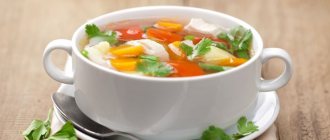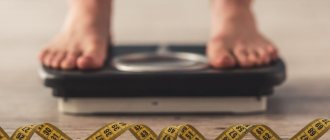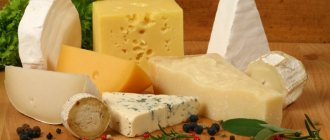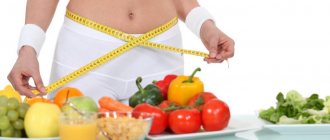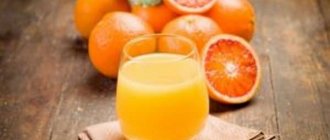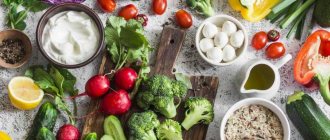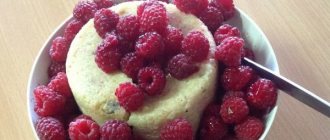Modern nutrition systems are aimed not only at weight correction and maintaining an ideal shape. The decisive factor when choosing a menu is the state of health, improving the quality, harmonious functioning of systems and organs. Intolerance to the milk protein, casein, is often diagnosed in children and adults. A dairy-free diet is prescribed to avoid allergic symptoms and includes an extensive list of products.
Basic principles of a dairy-free diet
The diet of a casein-free diet should be balanced and contain essential nutrients. Refusal of dairy products may be due to the following indications:
- intestinal infections;
- irritable bowel syndrome;
- casein intolerance in infants;
- lactose intolerance in children and adults.
When creating a dairy-free diet menu, you need to consider the basic principles of nutrition:
- daily caloric intake should not be less than 2000 kcal, this norm also applies to nursing mothers;
- the diet should be varied, it is necessary to take into account the balance of fats, proteins and carbohydrates;
- dairy products need to be replaced not only with proteins of animal, but also of plant origin;
- the principles of fractional nutrition are observed, the entire daily volume is divided into 5 servings, calculated in accordance with age standards;
- You need to carefully select products in the store, read the ingredients; products containing lactose and other milk components are prohibited;
- for the normal functioning of the digestive system, replenishing the deficiency of vitamins and minerals, it is necessary to enrich the diet with fruits, vegetables, and vegetable oils;
- It is necessary to comply with the drinking regime, you need to remember that during the hot period the norm for children and adults increases by 2 times.
A dairy-free diet excludes only products of animal origin. You can find a worthy alternative on store shelves:
- rice milk is often used in dietary nutrition, does not contain cholesterol, improves the condition of blood vessels, has a beneficial effect on the heart, glucose is released during the fermentation process, the product tastes similar to cow's milk, but contains a minimal amount of fat;
- almond is rich in vitamins, minerals, helps compensate for the deficiency of calcium, phosphorus, magnesium, contains essential fatty acids, allows you to stabilize weight, improves the condition of the skin, hair, nails, strengthens bone tissue;
- oatmeal contains vegetable protein, fiber, B vitamins, is quickly absorbed, recommended for baby food, is a complete alternative to cow's milk, helps remove cholesterol plaques, normalizes metabolic processes;
- hemp contains essential amino acids, is a leader in antioxidant content, restores intestinal function, and is also recommended for gluten intolerance;
- coconut milk contains vitamins B, C, PP, calcium, magnesium, iron, fiber, strengthens tooth enamel, improves blood count, but is a high-calorie drink and can replace a full meal.
Deficiency of vitamins and substances
Veganism may not be beneficial if you treat it like a fashion and do not consciously change your diet. If you suddenly give up your usual foods and rely on “bread and water,” your body can quickly develop a deficiency
various vitamins and minerals. Some deficiencies can go almost unnoticed, while others can be dangerous, especially when it comes to children and pregnant and lactating women.
The body may experience a lack of protein, calcium, iodine, iron, zinc
and a number of vitamins, the suppliers of which are mainly animal products. Let's look at what various deficiencies can lead to.
Protein deficiency
Protein
- this is the main “building material” of the body; it is necessary for a person to
grow and develop
.
If the body does not receive enough protein from food, the body begins to use the accumulated protein, taking it from muscle tissue. muscle mass
noticeably , and then
a loss of strength
.
A dangerous consequence of protein deficiency can be organ prolapse
due to a decrease in the muscle that fixes it.
To make up for protein deficiency with plant foods, you need to eat more legumes, grains, soy products, as well as mushrooms, seeds and nuts.
Calcium deficiency
Calcium
- This is the basis of
bones, joints
and the entire
musculoskeletal system
.
Calcium is also found in teeth and hair and is essential for maintaining overall skin tone. The main food supplier of calcium is dairy products. If you exclude them from the diet, then you need to add nuts, kale
and
broccoli
,
spinach, sesame seeds, parsley
and
sunflower seeds
.
You can find foods artificially fortified with calcium, such as tofu
and some types
of juices
.
Iodine deficiency
Iodine
necessary for proper functioning
of the thyroid gland
, the easiest way to get iodine is from
seafood
.
Unfortunately, most of the territory of our country is remote from the sea, so residents cannot consume enough seafood and satisfy the body’s needs for iodine, which leads to various diseases of the thyroid gland
and metabolic disorders.
The best plant source of iodine is seaweed
; iodine is also found in
buckwheat
and
millet
. To prevent iodine deficiency, you can use iodized salt for cooking.
Iron deficiency
Iron
plays an important role in organizing the process of saturating the body
with oxygen
.
Animal products contain sufficient amounts of iron, and vegans need to take care not to become deficient. The fact is that in plant foods the iron content is lower, in addition, “plant iron” is less absorbed, and dietary fiber removes metals from the body, so there is a high probability that iron will be excreted from the body in larger volumes than it is supplied. Among plant foods, the highest iron content can be found in porcini mushrooms, parsley, mustard and sesame seeds, peaches, apricots and spinach
. You also need to take into account that iron is absorbed only together with protein and vitamin C.
Zinc deficiency
Zinc deficiency is not so obvious, but zinc
is part of many
enzymes
and supports the functioning
of the human immune system
. Wheat sprouts, pumpkin and sunflower seeds, carrots, sweet peppers, white cabbage, eggplants, onions, garlic, oatmeal, soy products, lentils and other foods are rich in zinc.
Vitamin B12 deficiency
Vitamin B12 deficiency
Vegans have the hardest time replenishing because this vitamin is
only found in animal products
and it is simply impossible to find an alternative in plant foods.
Meanwhile, vitamin B12 deficiency can lead to anemia
. Red blood cells in the body are destroyed prematurely, so organs and tissues are not sufficiently supplied with oxygen. Doctors recommend that vegans look for foods artificially fortified with vitamin B12 or use dietary supplements.
Vitamin D deficiency
Vitamin D
The body is capable of producing it on its own; this happens when the skin is exposed to
sunlight
.
However, during periods when there is not enough sun, it is necessary to replenish the vitamin D deficiency through food. Vitamin D content in plant foods is much lower than in animal foods, however, vitamin D can be obtained from some mushrooms (morels, chanterelles, shiitakes)
, as well as from foods that are specially fortified with vitamin D.
Omega-3 fatty acid deficiency
Replenish the deficiency of Omega-3 fatty acids
It's easiest for vegans because they are found in both animal and plant foods.
Omega-3 fatty acids are needed by the body to regulate metabolic processes
and the proper functioning
of the cardiovascular system
. You can get them from nuts, tofu and various oils: flaxseed, rapeseed and soybean.
What can't you do on a dairy-free diet?
If an adult's menu excludes only products with lactose, a dairy-free diet for a child has more restrictions. When compiling a diet, you need to take into account the characteristics of sensitization to animal protein. Products with a high allergic potential are prohibited. 15% of children with lactose intolerance are also diagnosed with allergic reactions to other foods.
Authorized products:
- soy-based baby food;
- coconut, almond, soy milk;
- lactose-free cheese, milk;
- biscuits, drying;
- wheat bread;
- oatmeal, buckwheat, rice porridge in water with the addition of vegetable oil;
- lean meats and fish, preferably stewed, boiled or steamed;
- vegetable soups, first courses in a second meat broth with the addition of meatballs or boiled meat;
- green vegetables are recommended to be consumed fresh, orange, red, yellow ones are stewed or steamed;
- the list of fruits is selected individually depending on tolerance and absence of food allergies;
- You can introduce children’s fruit juices and purees into the menu, gradually increasing the serving size;
- eggs are consumed as an omelet without milk or boiled;
- vegetable oils;
- sweets are recommended based on nuts or sesame seeds in limited quantities;
- among drinks, herbal teas without dyes, flavors, compotes, and still water are preferred.
A protein-free diet without dairy products excludes:
- milk, dairy products;
- sausages with added lactose;
- mushrooms;
- white cabbage, turnips, radishes, onions without heat treatment;
- cherries, grapes;
- soda, kvass;
- sauces - mustard, horseradish, ketchup.
When creating a dairy-free diet for children, the allergic potential of foods must be taken into account. A gastroenterologist studies the child’s nutritional characteristics when creating a menu for nursing mothers. Hypoallergenic nutrition will help avoid clinical manifestations of intolerance.
Diet without dairy products - degree of allergenicity of products:
- high degree - eggs, fish, seafood, carrots, sweet peppers, celery, tomatoes, red berries, citrus fruits, nuts, cocoa, chocolate, honey, grapes, mango, pomegranate;
- medium level - red meats, legumes, potatoes, beets, blueberries, black currants, bananas.
Nutritionists do not recommend excluding allergenic foods. The main goal of diet correction is to reduce food sensitization. It is necessary to gradually introduce new products, monitoring any reactions that occur.
Permitted and prohibited products
The unpleasant fact that the baby was diagnosed with milk intolerance will, of course, deprive her of the opportunity to enjoy some familiar foods. However, the assortment of modern stores is able to replenish forbidden delicacies with various alternatives without any problems. Suitable for baby:
- Dairy-free porridge (oatmeal, buckwheat, rice);
- Legumes, soybeans, various beans;
- Various types of cookies and sweets without milk;
- Various vegetables, fruits and berries;
- Lactose-free and gluten-free baking mixtures;
- Almond, rice and coconut milk;
- Seeds, nuts and dried fruits;
- Oils (sunflower, olive, flaxseed, corn)
- Eggs (chicken, quail);
- Meat (beef, veal, rabbit);
- Poultry meat (chicken, turkey);
- Types of white river and sea fish;
- Dairy-free baked goods, baked goods, pasta;
- Natural juices, jelly, fruit drinks.
The following are strictly excluded from the diet:
- Milk;
- Cream;
- Kefir;
- Ryazhenka;
- Yogurt;
- Sour cream;
- Cottage cheese;
- Butter;
- Curdled milk;
- Serum;
- Salty cheeses;
- Condensed milk;
- Brynza.
Also prohibited are any products and dishes whose components are any dairy or fermented milk products made from cow's or goat's milk.
Dairy-free diet menu for a child under 1 year old
A dairy-free diet is prescribed to infants with lactose intolerance, as well as with an allergic reaction to casein. Not only dairy products are excluded, but also kefir, cottage cheese, cheese, yogurt, and sour cream. Symptoms may resolve on their own by age three. Lactose intolerance persists throughout life. If breastfeeding is present, pediatricians do not recommend stopping it.
The menu of the nursing mother is adjusted, a dairy-free diet is prescribed, as well as medications for lactose intolerance. It is important to choose the right formula for feeding. If you are allergic to milk protein, use products with protein hydrolyzate or soy based products. If goat milk is digested normally, it can be included in the menu. Lactose-free mixtures are prescribed accordingly for lactose intolerance. Complementary feeding begins at six months of age; the introduction of new products is controlled by a pediatrician.
Scheme for introducing foods to children under one year of age:
- 6 months - vegetable puree is introduced, for the first complementary feeding products with a low allergenicity level are chosen - zucchini, squash, yellow pumpkin; products with a high level of allergenicity are given once a week as an independent dish without additional ingredients;
- from 7 months, water-based porridges are introduced - oatmeal, buckwheat, rice, milk is replaced with a small amount of vegetable oil, gradually expanding the child’s diet;
- 8 months - fruit purees and juices are introduced, you should avoid using fruits with bright colors - strawberries, currants, blueberries, cherries, cranberries;
- 9 months - the menu is expanded to include rabbit and turkey meat; easily digestible animal protein has a low degree of allergenicity;
- at 11 months, combined vegetable soups with meat are used, each new component must be introduced at intervals of a week.
Dairy-free diet for a 1-year-old child daily menu:
- breakfast - dairy-free mixture, tea with fennel;
- second breakfast - apple and pear puree;
- lunch - puree soup from potatoes, pumpkin, zucchini, turkey meat puree, dried fruit compote;
- afternoon snack - oatmeal on water with olive oil;
- dinner - stewed vegetables (broccoli, carrots, zucchini), meatballs with rice and turkey.
What to feed a child by age
The composition of the diet and feeding rules depend on the age of the child.
Up to a year
In the event of a pathological reaction in a breastfed baby, it is necessary to adjust the menu of the nursing mother and temporarily exclude complementary foods.
After the symptoms disappear, the introduction of new foods begins with the least allergenic ones (for example, green vegetables). The break between each new product should be at least 1 week.
Infants who receive artificial nutrition are prescribed lactose-free or hydrolyzed mixtures that do not contain milk sugar and protein. To improve the functioning of the gastrointestinal tract after an intestinal infection, it is necessary to give the child probiotics and herbal teas.
After a year
From the age of one year, the child is gradually transferred to the common table.
If lactose intolerance was observed before 12 months, you can return kefir to the diet from one and a half years. If the pathological reaction recurs, the diet is extended to 3 years. If you are prone to allergies, it is recommended to introduce eggs, seafood, fish and exotic fruits after 2 years. Due to the lack of important sources of animal protein, it is necessary to monitor the total amount of protein in the diet and give the child vitamin D supplements.
2-3 years
Children 2-3 years old begin to be given mashed potatoes and soups from legumes, eggs and fish. The menu should not include mushrooms, spices, industrial confectionery, canned food, pickles and marinades.
To ensure the supply of necessary nutrients, permitted foods are alternated throughout the week. Synthetic vitamin supplements are given according to indications.
If there is a history of lactose intolerance, whole milk should not be introduced until 3-4 years of age.
From five years
From 4-5 years old, a child should receive more animal protein than plant protein.
The nutritional value and balance of BZHU are selected by a pediatrician or nutritionist. The main sources of proteins should be lean chicken, turkey, rabbit and fish. Fermented milk products are introduced into the diet with caution, and whole milk can be excluded completely.
For some autoimmune diseases, the child is prescribed both dairy-free and gluten-free diets.
Dairy-free diet menu for a child 2 and 3 years old
Starting from one and a half years, nutritionists recommend introducing kefir. A home-made product is used; if the reaction is normal, the menu is enriched with cottage cheese and milk. The scheme is identical to the introduction of allergen products at weekly intervals. If the reaction to lactose persists, dairy-free nutrition is extended to 3 years.
From the age of two, it is recommended to enrich the diet with proteins of animal origin, represented by seafood, fish, and eggs. Children 2 years old need to include legumes in the diet in the form of pureed purees, these are lentils, beans, soybeans. From the age of three you can prepare first courses with peas and mung bean.
Dairy-free diet for a 2-year-old child menu:
- breakfast - buckwheat porridge, banana puree;
- second breakfast - apple juice;
- lunch - potato and pumpkin soup, chicken cutlet;
- afternoon snack - rice pudding;
- dinner - fish balls, stewed zucchini.
Dairy-free diet menu for a 3-year-old child:
- breakfast - oatmeal with honey, dried fruit compote;
- second breakfast - baked apples;
- lunch - soup with beans and tomatoes, stew with broccoli and turkey;
- afternoon snack - salad with grated pear and carrots;
- dinner - mashed potatoes, stewed veal.
Basic principles and rules of dietary nutrition for children
The diet is compiled according to the following principles:
- dairy products are replaced by alternative sources of protein of animal and plant origin;
- There should be intervals of 2-3 hours between meals, the daily food intake is divided into 5-6 servings;
- during the diet, the amount of salt, carbohydrates and fats is limited, and the protein norm remains at the level of age requirements;
- all products are given in soft or pureed form to minimize irritation of the gastrointestinal mucosa;
- all dishes must be warm (optimal temperature is in the range of +37...+38°C);
- To ensure a sufficient amount of vitamins and minerals, the diet is enriched with vegetables, fruits and synthetic supplements prescribed by the pediatrician.
Dairy-free diet for weight loss
A dairy-free diet is effective for weight loss; positive reviews and results confirm the possibility of weight loss. Many note an improvement in skin condition, a reduction in inflammation, and normalization of the sebaceous glands. Refers to weight loss systems designed for a long term. As a result of using a dairy-free diet, you can lose from 3 to 8 kg per month.
Monday:
- breakfast - omelet, coffee;
- snack - baked apples;
- lunch - potato soup, stewed rabbit;
- snack - cookies with fruit juice;
- dinner - stew with broccoli, corn, sweet pepper.
Tuesday:
- breakfast - almond milk, whole grain toast;
- snack - a sandwich with boiled chicken and tomato;
- lunch - salad of spinach, cucumbers, boiled beans;
- snack - soy cheese, herbal tea;
- dinner - chicken chop, seaweed salad with sesame seeds.
Wednesday:
- breakfast - buckwheat porridge with olive oil and fresh herbs;
- snack - coconut milk, biscuits;
- lunch - soup with Brussels sprouts, veal goulash;
- snack - fruit salad;
- dinner - lentil puree, salad with arugula, cucumbers, tomatoes.
Thursday:
- breakfast - oatmeal with almonds and banana;
- snack - berry jelly;
- lunch - spaghetti with soy cheese, caramelized carrots;
- snack - orange;
- dinner - stewed fish, steamed asparagus.
Friday:
- breakfast - rice pudding, coffee;
- snack - grapes;
- lunch - soup with beans, cabbage, parsley root, turkey cutlets;
- snack - dried fruit compote, biscuits;
- dinner - chicken casserole with spinach.
Saturday:
- breakfast - homemade oatmeal cookies, herbal tea;
- snack - almond milk;
- lunch - stew with zucchini and rabbit;
- snack - grapefruit;
- dinner - salad with sardines, tomatoes and Chinese cabbage.
Sunday:
- breakfast - buckwheat porridge with dried fruits;
- snack - soy milk, biscuits;
- lunch - pea soup, pickled zucchini;
- snack - tangerines;
- dinner - veal steak, salad with spinach and corn.
A dairy-free diet is often accompanied by calcium deficiency, which is dangerous not only for children, but also for adults. You can compensate for the mineral deficiency by including the following products in the menu:
- fish - sardine, tuna, salmon;
- legumes - beans;
- vegetables - broccoli, spinach, lettuce, lettuce;
- citrus;
- almonds, sesame seeds.
Vegetable puree soup
In the classic version, cream soup is prepared with cream. We suggest replacing cow's milk cream with coconut cream - it will make the dish more flavorful.
This soup can be eaten cold or hot. You can cook vegetables in chicken or beef broth; any vegetable broth will work well.
- vegetables (pumpkin, zucchini, potatoes, carrots, fresh or frozen peas) - 300 g;
- water or ready-made broth - 250 ml;
- coconut milk or cream - 200 ml;
- croutons for serving;
- greens, sesame seeds, pumpkin seeds for sprinkling;
- cheese: optional, 150 g;
- salt, spices: to taste.
Wash the vegetables thoroughly, cut into pieces, add water or broth and boil until soft. Grind with an immersion blender or rub through a sieve. Return to low heat, add coconut milk or cream, and bring to a boil. Add salt and spices to taste. If desired, you can add any grated cheese. Serve with pieces of fried croutons; for older children, you can add pieces of fried chicken fillet. Sprinkle with herbs and sesame or pumpkin seeds.
Variations of gazpacho, a cold soup, are made without cooking from crushed tomatoes. You can add cucumbers, garlic, a couple of drops of lemon juice, kefir or yogurt, and herbs to them.
Dietary recipes
Dairy-free recipes for cooking at home:
Vegetable soup
Components:
- 2 potatoes;
- 100 gr. pumpkins;
- 50 gr. parsley root;
- 50 gr. Brussels sprouts;
- 10 ml sesame oil;
- bulb;
- 1 liter of water.
Peel potatoes, parsley, pumpkin and cut into small cubes, onion into half rings. Place the water on the stove, and after boiling, add the vegetables. After 20 minutes, add cabbage and cook for another 5 minutes. Before turning off, add oil and salt the soup before serving.
Chicken casserole
Components:
- 300 gr. chicken fillet;
- 500 gr. potatoes;
- bulb;
- egg;
- 15 ml olive oil;
- 5 ml lemon juice;
- a pinch of salt.
Peel the potatoes, cut into thin slices. Grind the chicken fillet in a meat grinder, cut the onion into thin half rings. Place potatoes, onions and minced chicken in layers in a mold, pour a mixture of olive oil and lemon juice on top, and add salt. Beat the egg with a whisk and brush the top layer. Preheat the oven to 200°, bake for an hour.
Protein diet without dairy products. Diets without dairy products
Find out how to lose weight quickly
without much effort!
Diet features
The following are prohibited:
- all types of cheese;
- bread and pastries;
- many semi-finished products;
- most sausages;
- various confectionery products.
This diet will really help you lose weight and will be useful for those who:
- suffers from severe intestinal disorders;
- has skin that is too oily and prone to acne;
- suffers from hypercalcemia (excess calcium).
During such a diet, it is better to minimize other fats: vegetable oils, eggs, fatty meats and fish. However, you need to make sure that the body receives enough protein and fiber. Therefore, the diet must include fresh fruits and vegetables, dietary poultry without skin, unpolished rice, oatmeal, buckwheat, sea fish and seafood. With this approach, you can relieve the digestive system, cleanse the intestines and improve the condition of the skin.
Precautionary measures
For a healthy person, 1-2 weeks of abstaining from lactic acid products in order to lose weight will not bring much harm. But those who are prone to dysbiosis or have been forced to take antibacterial drugs over the past month may experience disturbances in their intestinal microflora. This can manifest itself in bloating, intestinal colic, and stool disorders. In this case, the restriction must be immediately lifted and the required amount of dairy products must be returned to the menu. Additionally, you can take capsules to restore microflora.
- whole wheat bread;
- buckwheat;
- any legumes;
- leaf salad;
- oranges;
- seeds and nuts;
- greens: parsley, dill, etc.;
What fish is commonly called salmon? Why can the calorie content of salmon vary from 80 to 290 kcal per 100 g? What is the most dietary way to cook fish?
Proper nutrition for weight loss. Exercises at home to quickly burn belly and side fat.
But sometimes the dream remains unfulfilled. Neither fitness nor diet can help remove wrinkles and excess volume. But where training does not work, massage can work.
, Racionika, All rights reserved.
When do experts recommend lactose-free formulas?
When babies are diagnosed with this pathology, it is recommended to feed them artificially and use drugs that contain enzymes.
A lactose-free mixture is a balanced medicinal mixture that is used during the period of restoration of intestinal microflora in infants. The duration of taking this mixture is determined by the individual characteristics of the child’s body and is prescribed only by a pediatrician.
Formulas with a low amount of milk sugar or without the presence of lactose are prescribed to those babies who are artificially fed and who have already shown the first symptoms of lactase deficiency.
An indicator for recommended use is lactose intolerance in the secondary form, which is always caused exclusively by a disease of the intestine itself. For example, when an infection is detected in a baby’s intestines, it is recommended that he be completely switched to complementary feeding with a lactose-free formula. But when the baby gets better and his body restores lactase deficiency, he is gradually and very carefully returned to regular milk feeding.
Specialists can necessarily prescribe a lactose-free formula to premature babies who have been diagnosed with transient lactose deficiency. The formulas recommended by the pediatrician contain the lowest levels of lactose and are intended exclusively for children who were born before their due date.
Important: it is not necessary to stop feeding your baby breast milk if there is a lactose deficiency. Natural feeding should be excluded only if a pediatrician makes an appropriate diagnosis.
What is the difference between lactose-free and regular milk formulas?
The main difference is that the lactose-free formula does not contain lactose, and it is not a usual baby food in relation to adapted milk formulas. This is wrong. But it is also true that the lactose-free mixture is in a sense a medicine, and it is prescribed only according to indications .
Lactose-free formulas prescribed to infants do not contain lactose. But all the components of the mixture make up for the deficiency of substances in the child’s body.
Scientific research has confirmed that lactose-free formulas are absorbed by the baby’s body quite adequately and are just as healthy and nutritious as infant formula.
Recommendations from leading experts
Dear parents, if you notice the first symptoms in your babies, do not delay your visit to the pediatrician. After all, only a medical specialist can diagnose the true cause of the ailment and recommend the most optimal way out of the current situation.
Important: feeding your child this mixture on your own is strictly prohibited, because unreasonably feeding your baby a lactose-free product can cause harm and lead to serious problems with the child’s health .
A mixture purchased independently and introduced into the diet can cause constipation, lead to sudden weight loss, worsen the baby’s well-being and cause an allergic reaction.
Each baby is individual from birth, gradually changing his usual diet, carefully monitor his condition and behavior so that diet therapy brings you and your baby the desired result!

